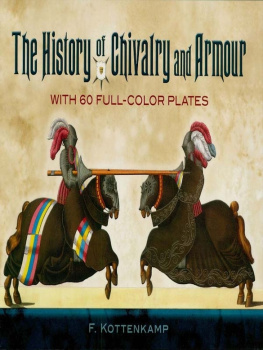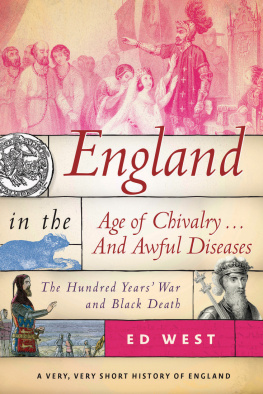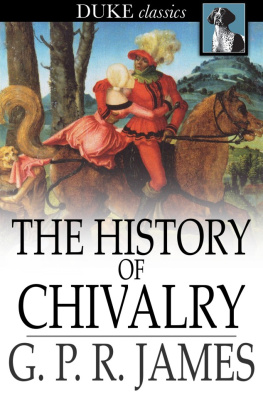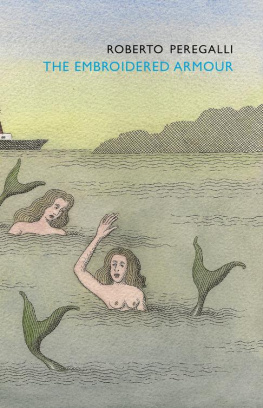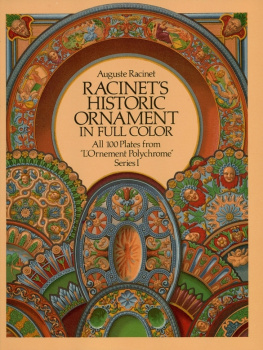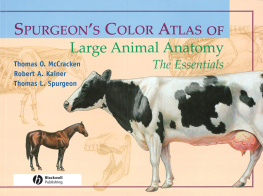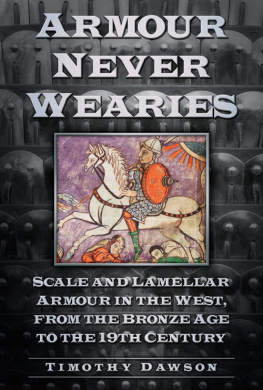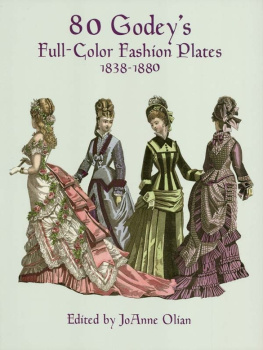Bibliographical Note
This Dover edition, first published in 2007, is an unabridged republication of the work originally published as The History of Chivalry and Ancient Armour by Willis and Sotheran, London, in 1857, translated by A. Lowy.
Library of Congress Cataloging-in-Publication Data
Kottenkamp, F. (Franz), 18061858.
The history of chivalry and armour / F. Kottenkamp.
p. cm.
Originally published: History of chivalry and ancient armour. London : Willlis and Sotheran, 1857. With 60 full-color plates.
Includes bibliographical references and index.
9780486137414
1. Knights and knighthoodEuropeHistory. 2. Knights and knighthoodEuropeHistoryPictorial Works. 3. ChivalryHistory. 4. ChivalryHistoryPictorial Works. 5. WeaponsHistory. 6. WeaponsHistoryPictorial Works. 7. ArmorHistory. 8. ArmorHistoryPictorial Works. 9. EuropeHistory4761492. I. Title.
CR4533 .K6713 2007
940.1dc22
2006051889
Manufactured in the United States of America
Dover Publications, Inc., 31 East 2nd Street, Mineola, N.Y 11501
TRANSLATORS PREFACE.
In the present work, Chivalry is described with regard to its feudal origin, its usages and ceremonies, arms, sports, and judicial combats. The pictorial illustrations are divided into two equal portions, the first of which represents ancient and medival weapons, with the various pieces of armour; and the other, combatants engaged in the achievements and the trials of the joust.
The Translator, without interfering with the original plan of the Author, has endeavoured to improve the practical character of the work by the addition of marginal annotations, a few foot-notes, a list of the illustrations, and an alphabetical index. He has also placed the references to the authorities at the end of the work, where they will satisfy the claims of the critical student, without inconveniencing the majority of readers, who take no interest in the enumeration of the original sources.
Such well-known authors as Du Cange, Meyrick, and others are, in most instances, mentioned without reiterating the titles of their works. The numerous references to Grimm relate to his Deutsche Rechtsalterthmer , or Antiquities of Germanic Law. They will prove valuable additions to the history of a bygone state of society, and help to present chivalry in a variety of interesting aspects.
A. LWY.
SKETCH OF THE FEUDAL SYSTEM.
Chivalry and Feudalism.
CHIVALRY and its military duties originated in the institution of aristocracy, and exhibited during the middle ages, those social and political relations of the nobility, which, in a greater or smaller extent, distinguished the privileged classes of all Germanic nations.
German Nobility.
Aristocratic Families.
It is undoubted that these privileged classes existed among the Germans before the invasion of the Roman empire. They are mentioned by Tacitus in various places, under the designation of nobiles, or principes, in contradistinction to the plebeian orders. Later records, legal and historical, of German tribes settled in the provinces of the western empire, treat likewise of aristocracy as a class distinct from that of mere freemen. In the ancient laws, the weregild , or fine paid by the murderer to the relations of the slain, was rated higher, if the victim was of noble origin. In historical works, there are also allusions to noble families that belonged to various German tribes. Among the Goths are noticed the Amali and the Balti ; among the Franks, the Merovingians; among the Lombards, the Gungici; among the Bavarians, the Agilolfingi, &c. In the Edda, (the mythological traditions of the Scandinavians) a line of demarcation is drawn between the noble and the ignoble. We thus obtain from various independent testimonies, the convincing proof, that the institution of nobility was inherent in the national economy of the early Germans.
Prerogatives.
Nobility in all instances, is invested with characteristic prerogative. What was the nature of those prerogatives among the Germans cannot be clearly determined; but we learn from a statement of Tacitus, that the chieftains of their tribes were elected from the higher ranks. Thus, the Cherusci petitioned the emperor Claudius to restore to them, as their leader, the last survivor of their nobles. This application suggests, that the high-born were considered as the kindred and peers of royalty, and exercised greater authority than the mere freemen.
Sacerdotal Functions of the Nobility.
The nobles combined with their duties, the functions of priests, to which, in some instances, judicial power was also attached, as we are led to infer from Scandinavian testimonies of the tenth century. In Iceland, the heathen sacerdotal dignitaries, termed Godar, held both religious and judicial offices, and transmitted their dignity to their male heirs. The Godar presided at the judicial court and at ritual ceremonies, appointed their coadjutors in the administration of justice, officiated at communal solemnities, (such as the manumission of slaves), and watched over the preservation of public security and peace. This combination of duties is nearly analogous to the several functions which Tacitus ascribes to the German priests.
Their Political Influence.
Graf, or Count.
The nobles were also charged with important political affairs, as is attested by Roman writers who lived during the decline of the empire. On embracing Christianity, the priestly immunities of the nobility were, of course, either lost, or appropriated by the Roman clergy; but the nobles still retained the direction of the judicial administration, as is to be observed in the first establishment of the large German domains, among the Franks, Saxons, Alemanni, &c. Judges were, in the days of Tacitus, elected by the assembly of the people; after the great migration, however, when the Germans began to form their extensive realms, the appointment of judges seems to have devolved upon the kings. In this way, the latter nominated their Grafen, (reeves, counts). The Romans translated the word Graf by Comes, which, at the final period of their empire, corresponded in meaning with prses provincia , (the governor of a province). The word comes , which was modified in the several Romanesque languages, ( comte, conte, conde =count), signified, at a later time, a certain grade of feudal nobility.
Duties of the Counts.
The dignity of count appears to have been conferred exclusively on nobles, and was not merely connected with the chief direction of the courts of law, but likewise with the civil administration. The Gothic counts superintended the revenue derived from the Romans, the convocation of the people to the annual muster, the maintenance of public tranquillity, &c.
Allotment of Lands.
Antrustiones.
It is not a settled question, whether the nobles, at the division of lands wrested from the Roman, received larger allotments than the freemen ; but it is consonant with the nature of regal authority, that a preference should be shown in favour of the former. The king surrounded himself with a number of officials, ( ministeriales ) whose services in the camp and at the court, were rewarded by the grant of so-called fiscal, or crown-lands. Noble courtiers, according to Tacitus, did not disdain to perform such menial services for royalty, as would, among the Romans, have been assigned to slaves. At the court of the Frankish kings, the nobles bore the title of Antrustiones; and they, like their sovereigns, gathered around them followers, who were composed of freemen and dependants. Neither were these courtly offices intrusted to nobles only. The Salic law speaks of freemen and even Romans, promoted to such high places. After the middle of the sixth century, these followers attained a preponderating influence at the courts of their princes, and subsequently effected a complete revolution in the allegiance of the nobles to the crown, and in the position of the alodialists, or freeholders. Like the Franks, the Goths had their suite of nobles. The Visigothic King Ricimer appeared on solemn occasions, with noble courtiers ( reguli ), who then already displayed in their equipment and arms that pageant, which remained the fashion throughout the middle ages.


